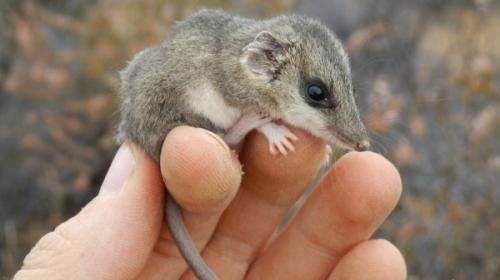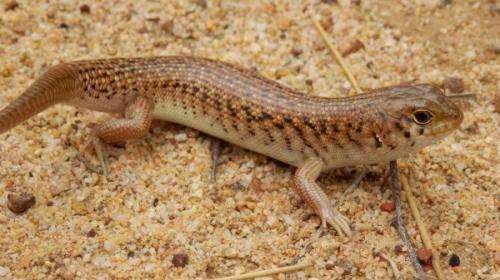Unburnt habitat needed to safeguard animal diversity

Fire management plans need to conserve long unburnt tracts of land to ensure habitat for a greater diversity of mammals and reptiles, according to a recent Edith Cowan University study.
The research, involving ECU Wildlife Ecology PhD candidate Tim Doherty, examined 15 reptile and mammal species from 41 captured in the Charles Darwin Reserve in the Avon Wheatbelt bioregion.
Among the most commonly trapped reptiles were skinks, dragons and geckoes. The most common mammals were native mice and dunnarts.
The research, funded by Earthwatch Institute Australia and Bush Heritage Australia, used pitfall traps at 27 shrubland sites in Spring and Autumn between 2010 and 2013.
They also measured vegetation characteristics at each of the trapping sites.
The research found five species, including the Fat-tailed Dunnart Sminthopsis crassicaudata (a small marsupial) and Desert Skink (Liopholis inornata), were most abundant in recently burned habitat, that is between eight and 13 years post-fire.
Four, including the little long-tailed dunnart (Sminthopsis dolichura), were most abundant in long unburned areas, that is 25 to 50 years post-fire.
A further six species showed no response to fire history.
Mr Doherty says large and frequent fires, either wildfire or prescribed burning, can homogenise landscapes.

Habitats all become a similar fire-age but different reptiles and mammals prefer habitat of different maturities, he says.
"For those species that prefer to live in the long unburnt areas, the habitat is not suitable for them in recently burned areas," he says.
"The key thing then is protecting the long unburnt shrublands because if they get burnt every 30 years or so, it is less represented in the landscape.
"By increasing fire frequency we are losing them and they take decades to recover.
"Having a mix of different fire ages across the landscape will help promote small mammal and reptile diversity."
The research also showed that a species preferred habitat could vary across different locations; for example previous research in South Australia's woodlands showed the Barred Wedgesnout Ctenotus (Ctenotus schomburgkii) preferred to live in mature habitat.
However, in the Charles Darwin Reserve study the Ctenotus was found to be equally abundant in both recently-burned and long-burned areas.
Mr Doherty says for this reason, land managers need be cautious of adopting species-specific information from different locations and broad vegetation types.
He says future research may look at areas immediately after they are burned, that is one to three years post-fire, to investigate if some species prefer that habitat compared to more intermediate areas.
More information: "Response of a shrubland mammal and reptile community to a history of landscape-scale wildfire." International Journal of Wildland Fire. DOI: 10.1071/WF14115
Provided by Science Network WA
















